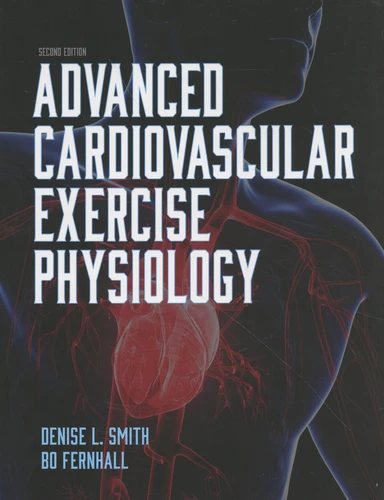Advanced Cardiovascular Exercise Physiology
2nd edition
Par : , Formats :
- Paiement en ligne :
- Livraison à domicile ou en point Mondial Relay indisponible
- Retrait Click and Collect en magasin gratuit
- Nombre de pages247
- PrésentationBroché
- FormatGrand Format
- Poids0.734 kg
- Dimensions21,5 cm × 28,0 cm × 1,7 cm
- ISBN978-1-4925-9381-2
- EAN9781492593812
- Date de parution13/06/2022
- ÉditeurHuman Kinetics
Résumé
Using the latest scientific and medical research, Advanced Cardiovascular Exercise Physiology, Second Edition, presents an engaging discussion of the responses and adaptations of the cardiovascular system to both aerobic and resistance exercise training. The text highlights the complex interaction of the components of the cardiovascular system, both at rest and during exercise. Specific attention is paid to the beneficial effects of exercise and the mechanisms through which regular exercise promotes cardioprotection.The second edition of the text features the following enhancements : - Added information about ventricular adaptations, endothelial function, and central blood pressure and its measurement ; - Expanded coverage on the pathophysiology of arterial stiffness and relevant measurement techniques ; - Updated content on blood pressure during exercise and its clinical importance ; - A new section on the effects of prolonged acute exercise on cardiac arterial and hemostatic function ; - Case studies to help readers apply the content in professional settings.
Advanced Cardiovascular Exercise Physiology, Second Edition, is richly illustrated with updated figures and graphics to depict physiological mechanisms, exercise responses, and training adaptations. The text provides a framework for understanding how the components of the cardiovascular system cooperate to support exercise and how those components adapt to and benefit from a systematic program of exercise training.
Ancillaries for adopting instructors are availabté online.
Advanced Cardiovascular Exercise Physiology, Second Edition, is richly illustrated with updated figures and graphics to depict physiological mechanisms, exercise responses, and training adaptations. The text provides a framework for understanding how the components of the cardiovascular system cooperate to support exercise and how those components adapt to and benefit from a systematic program of exercise training.
Ancillaries for adopting instructors are availabté online.
Using the latest scientific and medical research, Advanced Cardiovascular Exercise Physiology, Second Edition, presents an engaging discussion of the responses and adaptations of the cardiovascular system to both aerobic and resistance exercise training. The text highlights the complex interaction of the components of the cardiovascular system, both at rest and during exercise. Specific attention is paid to the beneficial effects of exercise and the mechanisms through which regular exercise promotes cardioprotection.The second edition of the text features the following enhancements : - Added information about ventricular adaptations, endothelial function, and central blood pressure and its measurement ; - Expanded coverage on the pathophysiology of arterial stiffness and relevant measurement techniques ; - Updated content on blood pressure during exercise and its clinical importance ; - A new section on the effects of prolonged acute exercise on cardiac arterial and hemostatic function ; - Case studies to help readers apply the content in professional settings.
Advanced Cardiovascular Exercise Physiology, Second Edition, is richly illustrated with updated figures and graphics to depict physiological mechanisms, exercise responses, and training adaptations. The text provides a framework for understanding how the components of the cardiovascular system cooperate to support exercise and how those components adapt to and benefit from a systematic program of exercise training.
Ancillaries for adopting instructors are availabté online.
Advanced Cardiovascular Exercise Physiology, Second Edition, is richly illustrated with updated figures and graphics to depict physiological mechanisms, exercise responses, and training adaptations. The text provides a framework for understanding how the components of the cardiovascular system cooperate to support exercise and how those components adapt to and benefit from a systematic program of exercise training.
Ancillaries for adopting instructors are availabté online.



